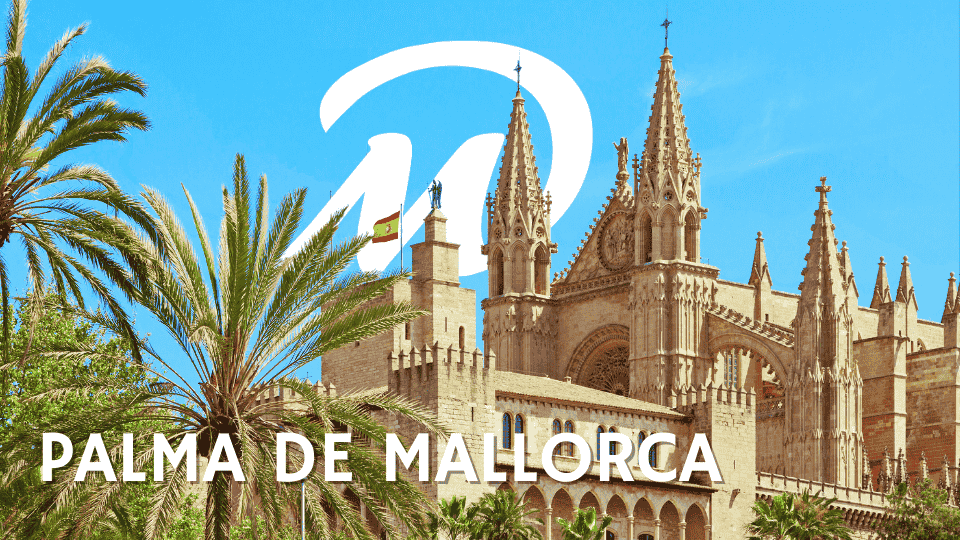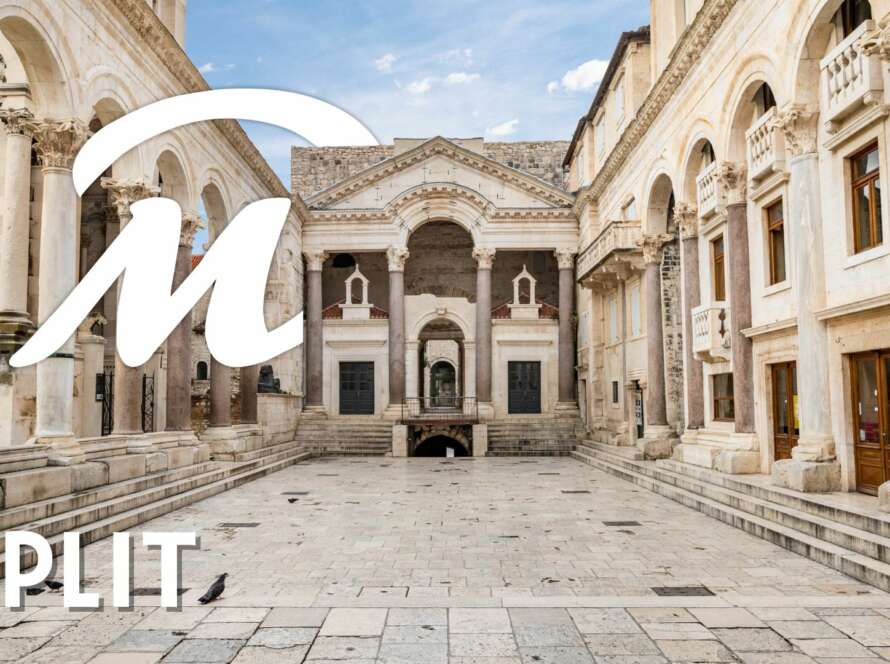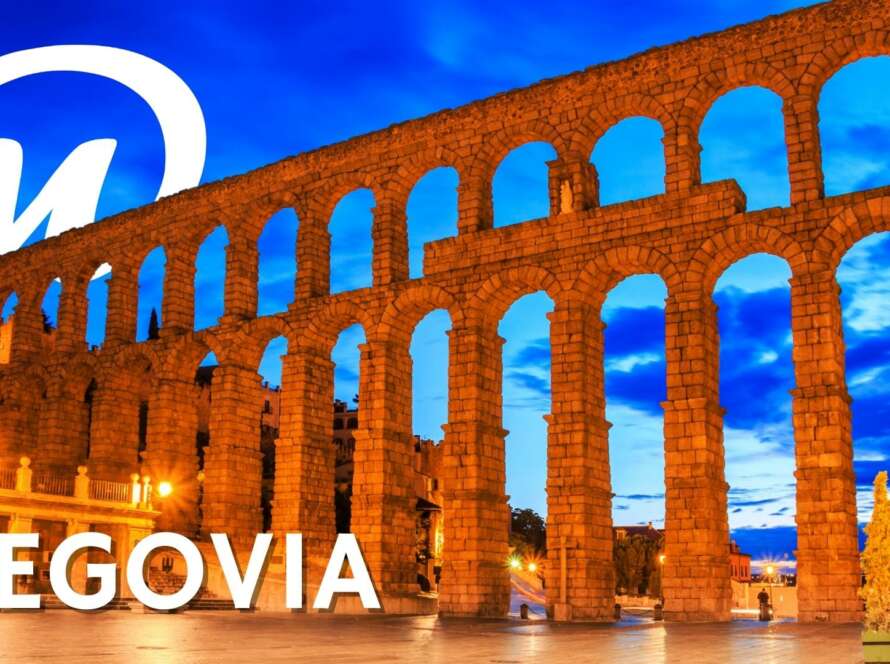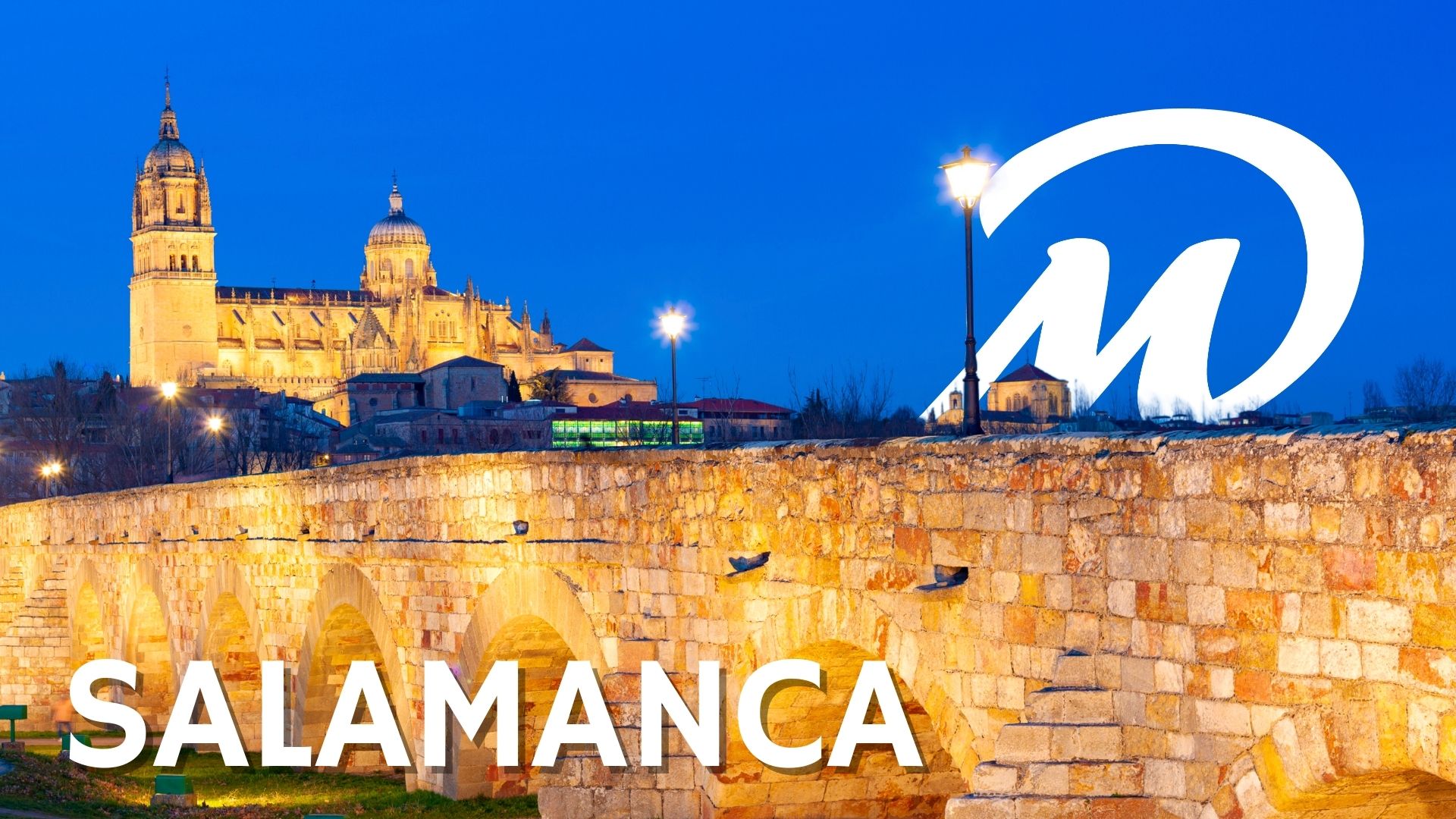Discover the best things to do in Pamplona with DareMapp. A guided tour to make sure you don’t miss anything in the city of the Sanfermines.
Discover things to do in Pamplona with DareMapp.
A city with a rich history, dating back to Roman times when it was called Pompaelo although over the centuries, it has been influenced by the Visigoths, Moors and Franks, before becoming part of the Kingdom of Navarre.
Pamplona is surrounded by medieval walls and is known for its well-preserved historic centre, beautiful parks, gardens 🍂 and especially the 🐂 San Fermines🐂 a must when choosing places to see in Pamplona.
Through fun games, questions and geolocation we will guide you through the most important places to see in Pamplona:
-Plaza del Castillo
– Church of San Saturnino
– Gateway of France. And much more…
The walk lasts approximately 1h30-2 hours
come and discover things to do in Pamplona with this fun interactive tour!
DO YOU WANT TO KEEP SEARCHING THROUGH BLOGS, OR DO YOU PREFER TO HAVE YOUR GUIDE OF THINGS TO DO IN PAMPLONA READY?
The DareMapp app makes it easy. Enjoy the COMPLETE GUIDE ON YOUR MOBILE and experience every corner in a unique way. No timetables and at your own pace.
A journey through history to discover things to do in Pamplona.
Pamplona, the capital of Navarre, was founded as Pompaelo by the Romans in the 1st century BC, and is strategically located on the Pilgrim’s Way to Santiago de Compostela.
Over the centuries, it has been influenced by various cultures, including Visigoths, Moors and Franks, and was an essential part of the Kingdom of Navarre. Its well-preserved medieval walls and old town reflect its rich history.
Internationally renowned for the San Fermín festival and its emblematic running of the bulls, popularised by Ernest Hemingway.
Pamplona is a hub of tradition and culture. Today, it combines its historical legacy with a vibrant social and cultural life.
👁️Discover and explore things to do in Pamplona, a city with more stories than excuses not to visit it.
Don’t miss them. With DareMapp, your new tourism app, guide on your mobile and without complications!
Things to do in Pamplona in 1 day. Key sites.
Pamplona Bullring
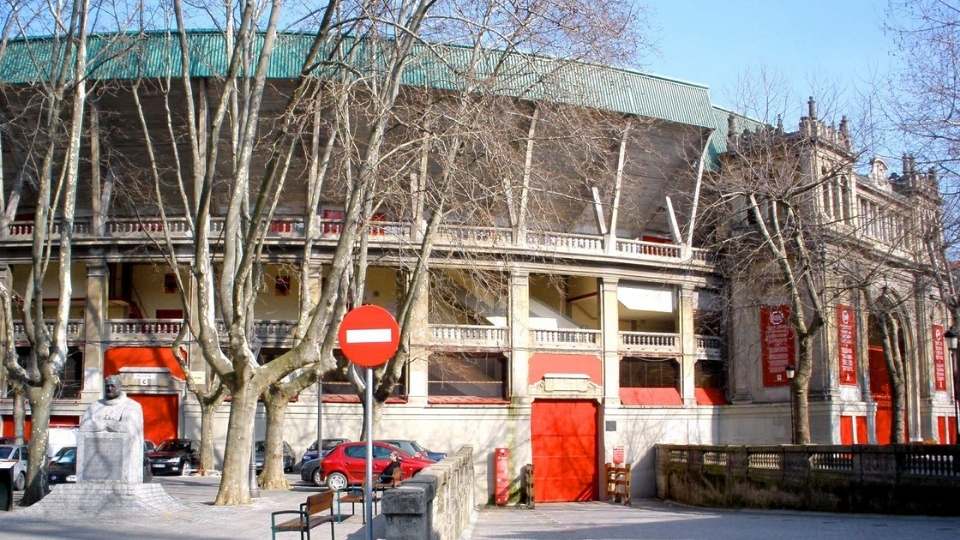
Built in 1922 and inaugurated in the middle of the Sanfermines, the Pamplona Bullring is one of the most recognisable bullfighting venues in the world. It is the second largest in Spain after Las Ventas, with a capacity for more than 19,000 people, and its history is closely linked to the city’s most international fiesta: the running of the bulls in San Fermín. Every July 7th, thousands of runners cross the streets of the old quarter to run into the bullring, culminating in one of the most intense and mediatic spectacles in the Spanish festive calendar.
Although the bulls take centre stage during the fiestas, the square is also used for cultural events, concerts and shows throughout the rest of the year. Its eclectic architecture, with a mixture of neo-Mudejar and functional elements, makes it a unique building that dominates the landscape of the centre. Moreover, in recent years, part of its structure has been renovated, incorporating modern security systems and spaces dedicated to cultural dissemination.
One of the most striking curiosities is the role played by Ernest Hemingway, whose novel Fiesta ( 1926) made the square and the Sanfermines world famous. The American writer was fascinated by the atmosphere of the city and the bullfighting experience, and became a regular in the bullring.
Things to do in Pamplona last July? You can take a guided tour of the inside of the bullring, including the passageways through which the bulls enter, the stands, the bullring and the chapel. It is a good way to understand the cultural and emotional dimension of this place.
Monument to the Running of the Bulls
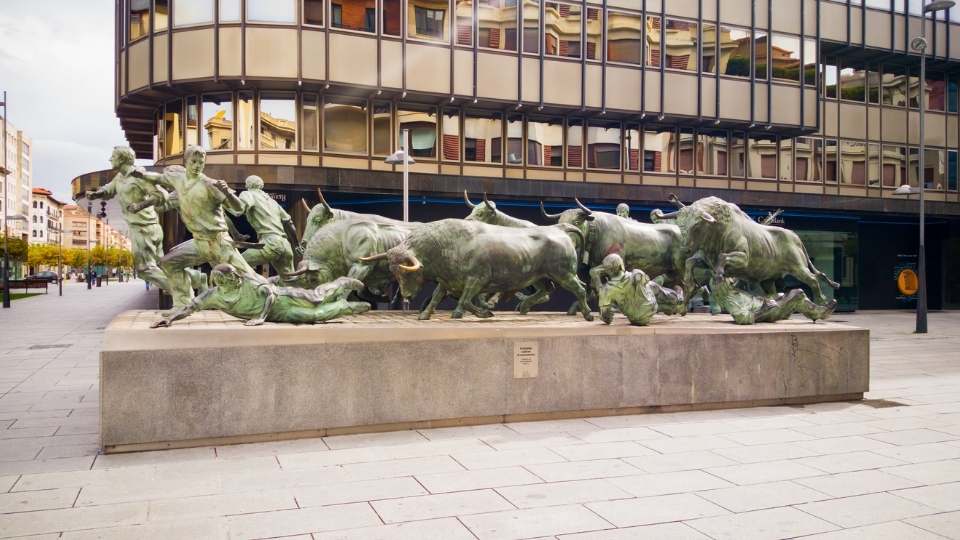
Located right in the centre of Pamplona, next to Avenida de Roncesvalles, the Monument to the Running of the Bulls is one of the most iconic sculptures to see in Pamplona. It was inaugurated in 2007 and is the work of the Bilbao sculptor Rafael Huerta, who managed to capture in bronze the energy, tension and controlled chaos of the San Fermín running of the bulls. The sculpture, more than 10 metres long, represents twelve runners and six bulls in the middle of the race, frozen in an eternal moment of adrenaline and movement.
What makes this monument so special is its extreme realism: the expressions of fear, concentration or bravery of the runners, the dynamism of the bodies and the strength of the bulls faithfully transmit what is experienced every morning from the 7th to the 14th of July in the streets of the old quarter.
Each figure is moulded in meticulous detail, making this sculptural ensemble one of the most faithful representations of the running of the bulls in existence.
What’s more, the monument is fully accessible: you can approach it, walk around it and walk among the runners, making it an interactive experience that tourists and locals alike enjoy. It is common to see visitors taking photos of themselves in the middle of the race or pointing out with amazement some gesture or detail of the sculptures.
As a curiosity, the work originally had eleven runners, but in 2014 one more figure was added, completing the composition that can be seen today. If you are in Pamplona, this monument is a must-see if you want to understand the spirit of the Sanfermines beyond the fiesta: as a mixture of tradition, risk and collective emotion.
Palace of Navarre
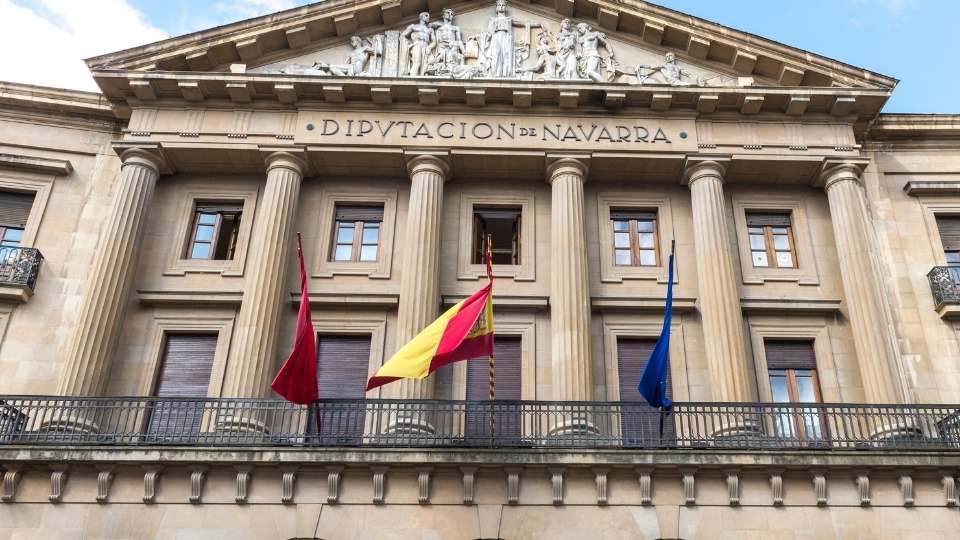
The main façade of the Palace of Navarre, an emblematic site to see in Pamplona, is adorned with an impressive sculptural group by Fructuoso Orduna, dating from 1951. This sculpture includes the coat of arms of Navarre flanked by two figures representative of the region: a highlander and a riverbank man, symbolising the diversity of the community. In addition, in separate niches, the bronze figures of two notable kings from Navarre’s history stand out: Sancho VII el Fuerte and Sancho el Mayor, adding a regal and cultural touch to the façade.
The porches of this palace still bear the traces of a bombardment suffered during the Spanish Civil War, adding a layer of tangible history that makes this place a living testimony to the city’s tumultuous past and a point of interest to see in Pamplona. At the rear of the building is one of Pamplona’s old snow pits.
This cylindrical structure, which reaches a depth of 7 metres, was used to store snow, which was preserved by means of a system of alternating layers of snow and straw. This traditional method, carefully maintained by the “nevero” – the person in charge of managing this process – is a fascinating example of historical preservation practices and a peculiar feature to see in Pamplona.
Each of these elements of the Palace of Navarre offers a unique window into the heritage and history of Pamplona, making it an essential destination for those seeking to understand and appreciate the city in depth.
Plaza del Castillo
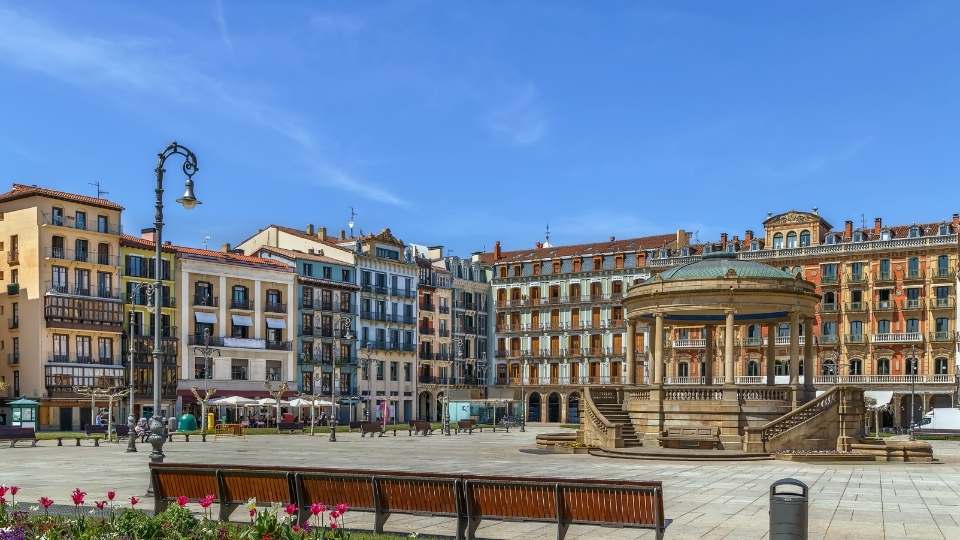
Known as the “living room” of Pamplona, the Plaza del Castillo (Castle Square) has been the epicentre of the city’s social and political life for centuries. Rectangular in shape and surrounded by elegant buildings with arcades, this square has witnessed medieval tournaments, markets, military parades, popular celebrations and even bullfights before the current square was built. Its history dates back to the 14th century, when this open space was located between the burghs of Pamplona and near the old castle of Luis Hutín, which gave it its name and of which no trace remains today.
Over the centuries, the square has changed its appearance several times. In the 19th century, the central bandstand was built, which today is one of its most recognisable symbols. Around it are terraces, cafés and historic establishments such as the Café Iruña, opened in 1888 and frequented by Ernest Hemingway, who turned the square into a mythical place in his novels. In fact, you can still sit at the table that bore his name and contemplate the comings and goings of the people of Pamplona.
The square has been the scene of great events: the Second Republic was proclaimed here, political rallies were held here and, more recently, it has become a meeting place for festivals, concerts or just a coffee in the sun. Its atmosphere changes with the seasons, but it is always alive.
A tip: visit it both day and night. The play of light on the façades at dusk gives it a magical atmosphere. And if you want to understand the essence of Pamplona, this is undoubtedly one of the places you cannot miss.
Estafeta curve (Bull Run)
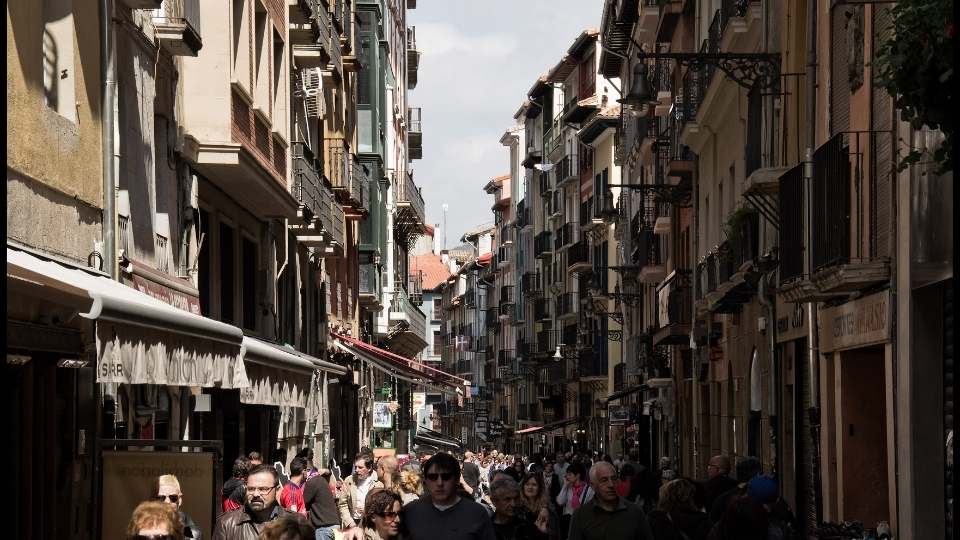
If there is one street in Pamplona that needs no introduction, it is Calle Estafeta. Famous the world over for being one of the most intense stretches of the San Fermín Bull Run, this narrow street in the Old Quarter has become a symbol of the city. But beyond the bulls, Estafeta has history, daily life and many curiosities to tell.
The name of the street comes from the old postal system of the 18th century, when a “estafeta”, i.e. a post office, was located there. However, its current fame is due to the running of the bulls: it is one of the most dangerous and exciting stretches of the route, with a sharp bend that connects with Calle Mercaderes, where the bulls often slip when taking the corner. Every 7th July, thousands of people from all over the world follow what happens here, and the most experienced runners choose this place to run.
Outside the San Fermin context, Estafeta is a street full of bars, taverns and traditional shops, ideal for tapas and enjoying the local atmosphere. It is common to see its decorated balconies and visitors leaning out to imagine what it must be like to experience the running of the bulls from above. The walls still preserve some of the wooden gates and protections that are installed during the fiestas, giving you a clear idea of how the city is transformed during these days.
To walk along the Estafeta is to walk through part of the soul of Pamplona. Whether for its history, the flavour of its bars or the emotion it conveys, this street is a must-see in Pamplona to understand the true identity of the city.
Cathedral of Santa María la Real

Dominating the old quarter of Pamplona, the Cathedral of Santa María la Real is much more than a religious temple: it is a true compendium of history, art and power to see in Pamplona. Built between the 14th and 15th centuries on the remains of earlier temples, its neoclassical façade may be misleading at first sight, but behind it lies one of the most complete and surprising cathedral complexes in Europe.
The exterior is sober, but it is enough to cross its doors to discover an imposing Gothic interior, with a high, luminous nave and Baroque choir stalls that attract all eyes. In the centre of the presbytery is the mausoleum of Charles III the Noble and Eleanor of Trastámara, a jewel of Gothic funerary art, carved in extraordinary detail.
But what really makes this cathedral a special place is its Gothic cloister, considered one of the most beautiful on the continent, with elegant arches, delicate sculptures and an atmosphere of seclusion that invites calm.
The complex also includes the Cathedral Museum, which houses liturgical pieces, codices and archaeological remains, and the bell tower, which can be climbed to enjoy one of the best views of Pamplona. Another very special corner is the medieval kitchen, dating from the 14th century, an architectural rarity that is unique in Europe and has been preserved in its entirety.
As a curiosity, the cathedral was the site of royal coronations and funerals, and was the venue for events of great political importance for centuries. If you are interested in history, architecture or simply in enjoying a place with centuries of life, this is an essential stop on your visit to Pamplona. An unexpected gem that will not leave you indifferent.
DID YOU KNOW… today’s Pamplona used to connect Navarrería, San Cernin and San Nicolas (3 burghs) “?
With DareMapp, you can discover the most famous ones… and without getting lost among them!
Navarrería Fountain
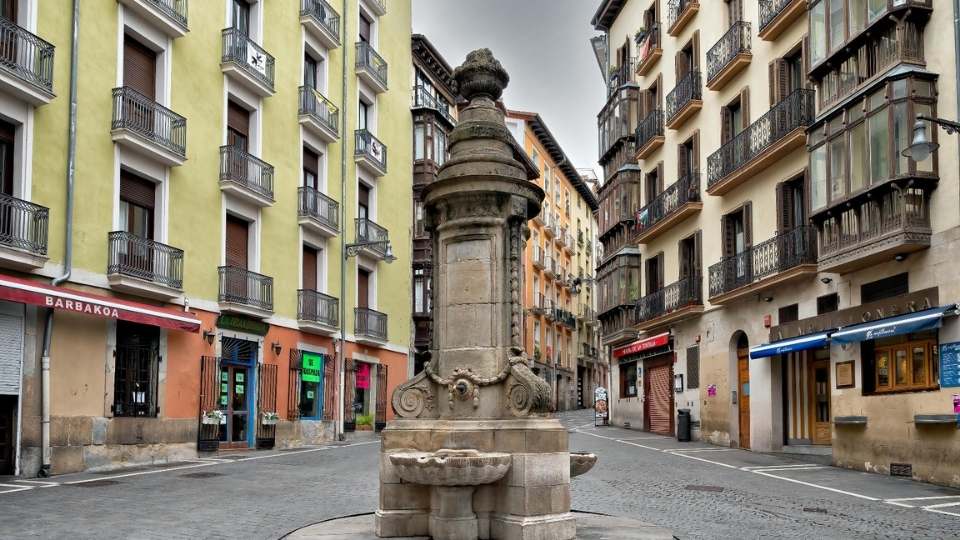
Right in the heart of the old quarter, the Fuente de la Navarrería is one of those discreet corners which, without making a noise, form an essential part of the soul of Pamplona. Although its current appearance dates back to the 18th century, its history goes back even further, as this space has been a meeting and transit point since medieval times. It is located in the Plaza de la Navarrería, one of the oldest areas of the city, surrounded by historic houses, worn cobblestones and an atmosphere that mixes tradition and youth.
The fountain was designed in 1788 by Luis Paret, a court painter and author of several urban planning works in the city. Its construction was due to the arrival of running water from the Subiza spring, and it formed part of a group of ornamental fountains scattered around Pamplona. It is made of stone, with a curved base, shell-shaped pylons and an upper body topped by a figure reminiscent of a classical vase. Opposite it stands the Palace of the Marquis of Rozalejo, which completes a picturesque setting with a great deal of personality.
For decades it was a place for locals to stock up on supplies and, over time, it became a popular meeting place. In recent years, it has also taken on a more festive dimension: during the Sanfermines, it is common to see groups of young people celebrating around the fountain, which has gone from being a place of meditation to a symbol of coexistence.
It is not a great cathedral or a monumental square, but if you want to feel the authentic pulse of the old quarter, the Navarrería Fountain is one of those essential places to see in Pamplona.
Santo Domingo Market
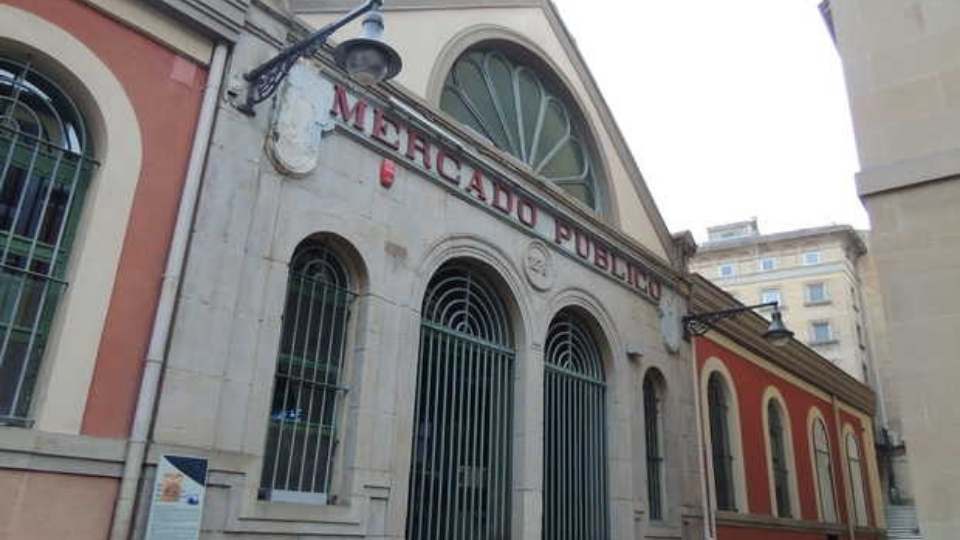
Located next to the famous slope where the running of the bulls starts, the Santo Domingo Market is the commercial heart and soul of Pamplona’s old quarter. Founded in the 16th century and rebuilt after a fire in the 19th century, it is the oldest market in the city and one of the oldest active markets in Spain. For centuries, it has been the place where the people of Pamplona have been doing their daily shopping and where history, tradition and everyday life blend together.
The current building was inaugurated in 1877, maintaining the structure of the old Pósito, and today it houses more than 40 stalls surrounding a central courtyard. Among its stalls you can find high quality fresh produce: meat, fish, cheese, bread, fruit and vegetables, many of them of local origin. But the market is not just for shopping: it is also a gastronomic and cultural space, with restaurant areas and activities such as concerts and tastings. It even has its own theatre-café, the Zentral, which gives a second life to this emblematic space.
A curiosity that few people know is that the running of the bulls of San Fermín has one of its roots here: the old butchers of the market were in charge of leading the bulls from the corrals to the Plaza del Castillo, and this route is the origin of the current running of the bulls. Ernest Hemingway also mentions the market in his novel Fiesta, as part of the authentic experience of the city.
If you want to get to know the day-to-day life of Pamplona, this is the place for you. It’s a place where you can literally savour the local culture and feel part of the city, even if only for a little while. A must if you are looking for more than just monuments.
Museum of Navarre

In the middle of the slope of Santo Domingo, the Museum of Navarre preserves the memory of an entire region. Located in the former Hospital de Nuestra Señora de la Misericordia, a 16th-century building that preserves a beautiful Renaissance façade, this museum not only preserves history: it tells it with its own voice, through unique pieces that range from prehistory to contemporary art.
Inaugurated in 1956, its collection is surprisingly extensive. Among its most valuable pieces are the Map of Abauntz, considered to be the oldest map in Western Europe, and the Leyre Chest, a jewel of Hispano-Muslim art made of ivory around the year 1000. It also houses Roman remains such as the famous Togado de Pompelo, which until recently was thought to be a man… until a study revealed that it actually represents a girl of about 10 years of age.
In recent years, the museum has become even more important with finds such as the Hand of Irulegi, from the 1st century BC, with inscriptions in the Basque language, and the Man of Loizu, a human skeleton more than 9,000 years old. Both have revolutionised what we know about the first settlers of Navarre. The museum also offers an excellent display of contemporary Navarrese art with sculpture, painting and video works.
If you are looking for a place to see in Pamplona that condenses centuries of history in a single visit, this museum is the place. Didactic, visual and profound, the Museum of Navarre is an essential stop to understand the soul of Pamplona and the cultural weight of the whole land.
Image of San Fermín on the Cuesta de Santo Domingo
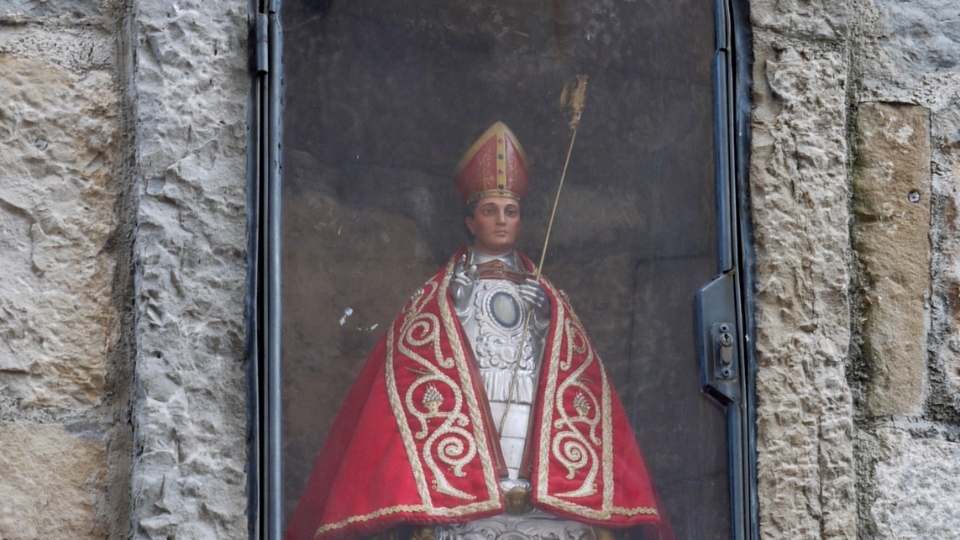
If you pass along the Cuesta de Santo Domingo at dawn during the Sanfermines, you will hear hundreds of runners chanting to a small figure in a niche in the wall. It is the image of San Fermín, patron saint of Pamplona, and although it is discreet in size, its symbolic importance is enormous.
The niche is located halfway up the slope, on a wall that becomes a point of reference every morning from the 7th to the 14th of July.
There is a small bronze image of San Fermín with his mitre, crozier and bishop’s cape. It was placed there in 1962, although there was already a painting of the saint in the same place. Since then, the runners in the encierro chant a short prayer three times, looking towards it, just before the corrals open: “We ask San Fermín, as he is our patron saint, to guide us in the encierro, giving us his blessing“. This is one of the most exciting moments of the day.
The image is protected behind bulletproof glass and flanked by a metal fence. Although during the rest of the year many pass by without stopping, during San Fermín it becomes one of the emotional epicentres of the city. The devotion it arouses has less to do with religion than with tradition, respect and the collective feeling of those who take part in or watch the running of the bulls.
Standing in front of the niche, even if it is not July, is a way of connecting with the heart of the fiesta. A simple gesture, but full of meaning, which explains why this little corner is one of the places to see in Pamplona.
The Citadel
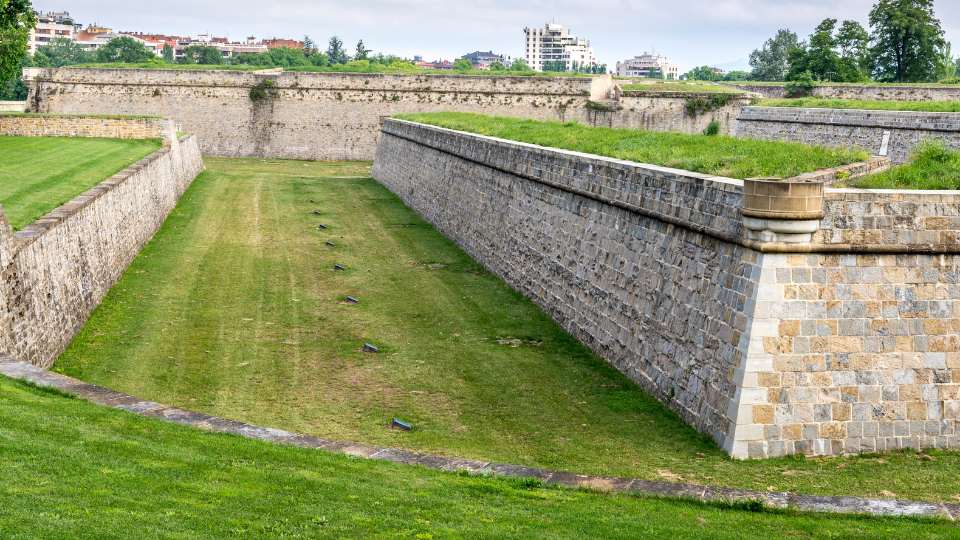
The Pamplona Citadel is one of the most impressive examples of Renaissance military architecture in Spain to see in Pamplona. Built in the 16th century by order of Philip II, it was designed by the Italian military engineer Giacomo Palearo “el Fratín” in the shape of a five-pointed star, following the most advanced defensive models of the time. Its objective was clear: to maintain surveillance and control over the city, at a time when Navarre had just been incorporated into the Crown of Castile.
For centuries, the Citadel fulfilled military and defensive functions. Over time it lost its strategic value and became part of the urban growth of Pamplona. Today, this old bastion is a large public park with green areas, paths for strolling and a cultural agenda that makes use of the old buildings for exhibitions, children’s activities, concerts and contemporary art exhibitions.
Among its most outstanding elements are the bastions, moats, ravelins and drawbridges, which are in excellent condition. Strolling along its walls is like taking a trip back in time, and at the same time enjoying a green lung right in the centre of the city. The Citadel also forms part of Pamplona’s defensive complex, which includes other fortifications such as the Fort of San Bartolomé.
A curiosity: under its esplanades are hidden underground galleries that formed part of the defensive system, although not all of them are open to the public. And during the Sanfermines, the Citadel becomes a quiet place to escape from the hustle and bustle.
A historical space, a rest area and a cultural centre, the Pamplona Citadel is one of those places where the past and the present go hand in hand. An essential visit to understand the history and character of the city.
Pamplona City Hall
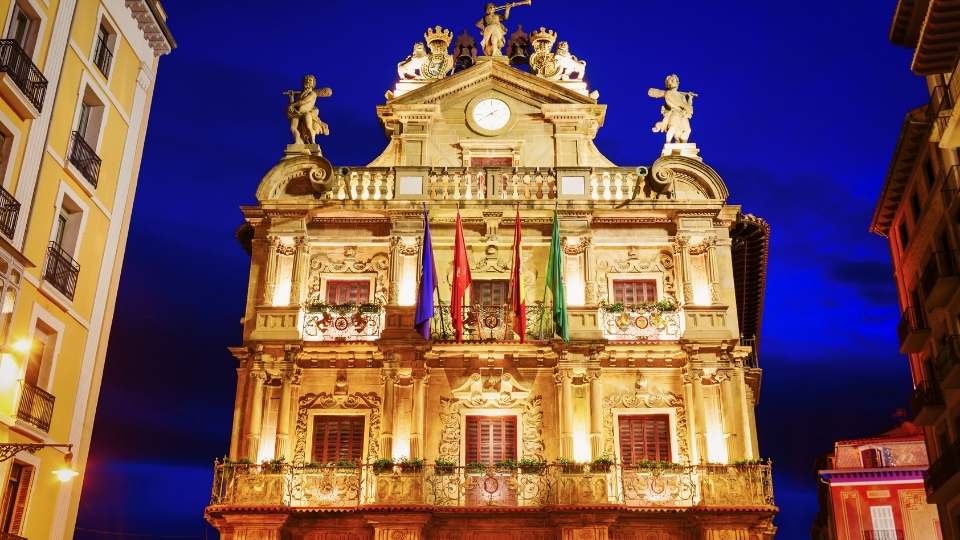
Its origins date back to 1423, when Charles III ordered it to be built on the site where the medieval burghs converged. The current building that you can see in Pamplona was built between 1753 and 1759, according to a project by the master builder Juan Miguel de Goyeneta.
The architectural elements that make up the façade are Baroque, as are the ornamentation of leaves, the geometric elements and the mirrors with rocaille. Guarding the door of the Town Hall are two allegories representing two virtues: Prudence and Justice.
At the top of the building are two Hercules, symbolising civic virtues, and at the top of the building is the allegory of Fame, herald of the city’s splendour. The Town Hall and the Plaza Consistorial are one of the most important stages of the Sanfermines. Every 6th July, the Chupinazo, the rocket announcing the fiestas, is launched from here.
Church of San Saturnino
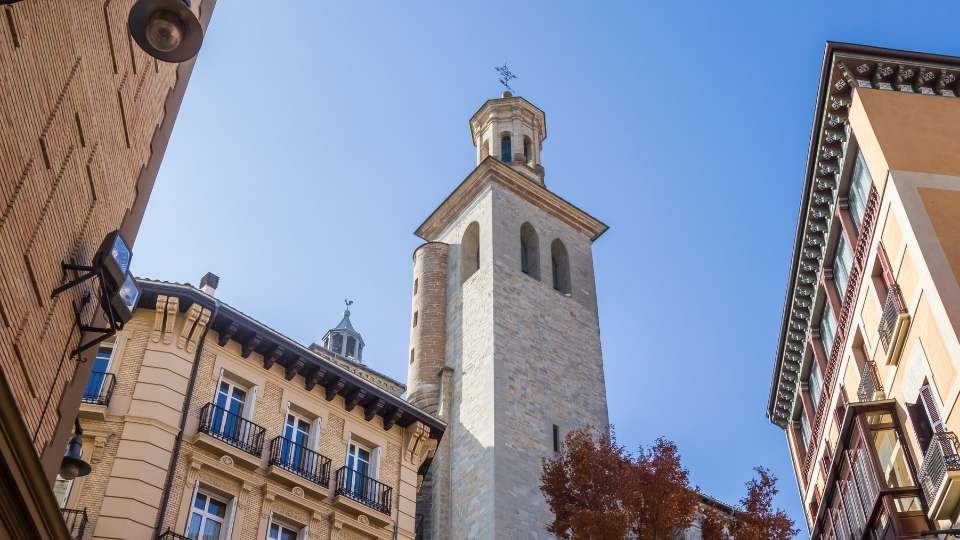
The church of San Saturnino, more commonly known as San Cernin, is a Catholic religious building to see in Pamplona in the Old Quarter.
The present church is Gothic from the 13th century; however, there was a primitive church on the same site, and another Romanesque church (12th century). In the Middle Ages, it fulfilled a double function: religious and defensive.
In addition to its towers, the portico stands out, decorated with beautiful Gothic carvings such as those of Santiago Peregrino or San Saturnino, and the interior, Gothic, with a very wide single nave with a sexpartite vault.
A weathervane in the shape of a cockerel crowns the main tower of the church.
This “cockerel of San Cernin” is one of the most popular emblems to see in Pamplona.
The clock located in the same tower, built in 1499, announces every morning of the San Fermin fiestas the moment when the rocket is fired to start the Bull Run.
San Fermín Chapel
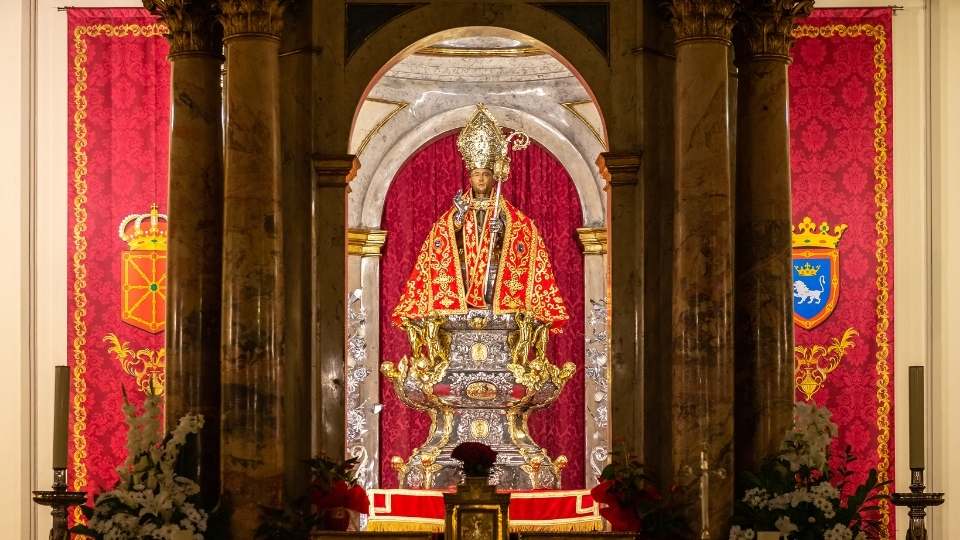
The Chapel of San Fermín is located inside the Church of San Lorenzo and of the original medieval temple, which formed part of what was once Pamplona’s defensive system, barely a tower remains today.
The San Fermín Chapel, things to do in Pamplona, is on the right as soon as you enter, and above the altar stands the venerated relic of the Saint, a half-length carving made of polychrome wood and trimmed in silver, dating from the end of the 15th century.
His countenance is dark, perhaps because he was originally black or because the smoke from the candles has darkened him… Hence, the Saint has also been given the name of “morenico” (little brown).
Legend has it that San Fermín, son of the senator Firmus who governed Pamplona in the 3rd century, converted to Christianity and was ordained a priest in Toulouse.
He returned to Pamplona as bishop and died a martyr in France on 25 September 303.
Taconera Gardens
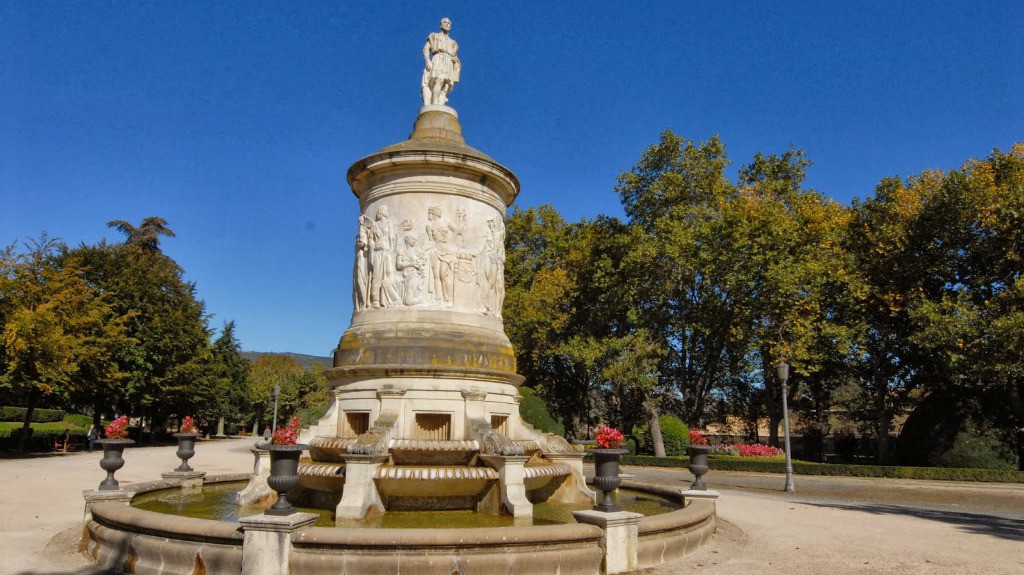
The Taconera Gardens are the oldest, most beautiful and emblematic park to be seen in Pamplona. With a surface area of 90,000 square metres, it is located around the city walls, very close to the Old Quarter, in a markedly romantic and Versaillesque style.
Throughout it we can stroll among trees, well-tended gardens, next to the ramparts and their moats?
Along the promenades there are numerous fountains, statues and monuments such as those of Julián Gayarre or the Mariblanca, which once presided over the famous castle square.
If you come here with children, they can have fun on the swings, as well as seeing the large number of animals that live together in the moats of the walls.
A haven of peace as long as the inhabitants don’t talk to everyone together: deer, ducks, peacocks, different types of roosters and hens make up the neighbourhood.
An ideal place to visit with the little ones and show them that animals also have a place in the city centre.
Tips to travel with peace of mind
When everything is ready — flights, hotel, itinerary — there are only two more things you need to travel worry-free: a good internet connection and reliable travel insurance.
✔ Get an international eSIM already set up on your phone. No need to change your SIM card, search for Wi-Fi, or pay for roaming. Activate it before your trip and enjoy unlimited data from the very first minute, wherever you are.
✔ Take out travel insurance that includes medical assistance 24/7, coverage for cancellations, theft, and — most importantly — advance payment of all medical expenses without you having to pay, wherever you are. Because in a new country, what matters most is feeling safe. Moreover, DareMapp offers you a 5% discount.
Both services can be arranged online in less than 5 minutes, with no paperwork required.
Don’t leave it to the last minute!
👉 Activate your Holafly eSIM at the best price here.
👉 Take out your travel insurance with IATI and get a 5% discount.
Other places to see in Pamplona.
In addition to the places seen in the guide there are several other places to see in Pamplona that you can’t miss:
El SADAR Stadium: home of Club Atlético Osasuna since its inauguration in 1967. With a current capacity of over 23,500 fans, it has recently been modernised to offer better facilities and an improved spectator experience. Known for its vibrant atmosphere and fervent home fan support, El Sadar represents a crucial sight to see in Pamplona for the region’s football community, maintaining a rich history of memorable sporting encounters.
Paseo del Redín: A medieval-looking street along the city wall with a very photogenic bridge.
Pintxos route through the narrow cobbled streets of the Old Town. Navarrese cuisine is delicious and Pamplona is a fantastic place to try it. Pinchos of chistorra sausage, vegetable stew, roast lamb? get ready for a feast!
🗺️Tu route around Pamplona, with DareMapp
📍More than 30 points of interest
➤3 routes around the city.
💡Recommendations, excursions & unique experiences
❓Questions, quizzes and more than 2 hours of narrated content
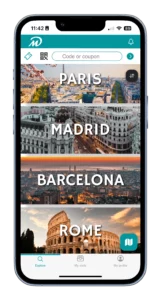
What better way than to travel and discover by learning in a fun way? Visit our blog to discover other guided tours.
Visit our social networks and discover things to do in Pamplona (and in other cities), as well as lots of tips on tourism.
Remember that with DareMapp you can take a multitude of interactive guided tours. Fun tourism in the main destinations.
what better way than to travel and discover while learning in a fun way?


